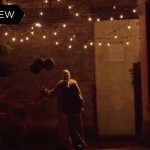“When it goes away, I have to hop on to something else so that at any point, I’m working on four or five paintings at a time bouncing around the studio.”
While painting became a major part of Lee’s life, he didn’t leave acting. Most recently, he appeared in the film Searching and the Korean television series Miracle We Met. He says that his two careers work in tandem with each other.
“On the acting side, there’s this humility that comes from being able to collaborate with others, knowing that you are a small piece of the puzzle,” he says.
“On the artist side, it’s pure narcissism, pure selfishness. I’m my own dictator on my own time. I feel like I need both of those human elements to balance me out as whole. I’ll go away and do a film or a TV show for a few weeks, a few months, and as soon as I get back, I have this yearning to be by myself, hibernate, lock myself away, just paint. It’s how I manage my time.”
Moreover, his training as an actor has helped inform his painting. “I think that the closest resource that I had was acting,” he says. “When you’re studying acting, you’re literally studying a person’s face. You’re studying their emotions, trying to peel back the layers on people’s individual behaviors and, so for me, when I wanted to paint, that was the closest reference that I had.”
Lee says that his studio, in L.A.’s Fashion District, is full of reference material, from magazine clips to photos that he has taken. He makes note of specific details that stand out to him and will start painting without sketching beforehand. He says that it can take six months to a year to complete a painting and he works on multiple pieces at once. “If I’m on this train of thought, I’m paranoid that I’m going to lose it, so I have to just work through it until it goes away,” he says. “When it goes away, I have to hop on to something else so that at any point, I’m working on four or five paintings at a time bouncing around the studio.”
Lee calls his process “organized chaos.” He describes a typical day in the studio: “Just idly staring at a blank canvas for hours, me jumping up and down because I got one stroke that I love or me yelling at my canvas because I can’t seem to get this one stroke that I want.” Lee’s portraits often obscure portions of the face with abstractions. He uses big brush strokes and bold colors to hide and reveal pieces of his subjects. That wasn’t intentional, he says. Early on, he left less to the imagination. The abstract brush strokes are there, but so are distinct features. Some portraits depict recognizable individuals, like celebrities and political figures. “There was definitely a lot more realism in it,” Lee says of his early work, “but that was just because I wanted to learn technique. I wanted to get good.”
More recent works allow the thick strokes of paint to cover more of the face. Sometimes, it’s an eye or a nose or mouth that remains visible. Other times, it’s little more than a head of hair.
With his pieces for the series The Choir, Lee keeps one common item amongst the people in his portraits, a black turtleneck. “The uniformity of that is something that I wanted to translate visually. On top of that, you have the individual strokes, all the different nuances and complexities that come with every individual,” he says.
“For me, that sets what the choir is. We’re all members of this choir. Society has trained us to sing this same song,
the same notes, yet, when you look at us individually, we all look different, we all have something different to bring to the table.”
Reflecting on his aesthetic choices, he says that may be related to his desire to understand “motives and behaviors.”
“I think that’s what started it for me, doing this literally fragmented style of portraits was trying to break apart this exterior, this societally built exterior that we all carry,” he says. His reflections on moving to Los Angeles from Indiana may play a part too. “Everyone has a mask and, myself included, it’s built on insecurity. It’s built on anxieties and fears. It’s tough to engage with people,” he says. “That was new for me, coming from Indiana, where you just naturally talk to people and it’s fine.” He adds:
“It was tough, just getting to know people, just making friends.”
As a whole, Lee says that his painting is instinctual. “I feel that my style of painting is really an extension of my personality and my emotion in that moment,” he says, “and my paintbrush and palette is just a conduit.”*
This article originally appeared in Hi-Fructose Issue 53, which is sold out. Support what we do! Get our latest issue of Hi-Fructose and subscribe today here.


